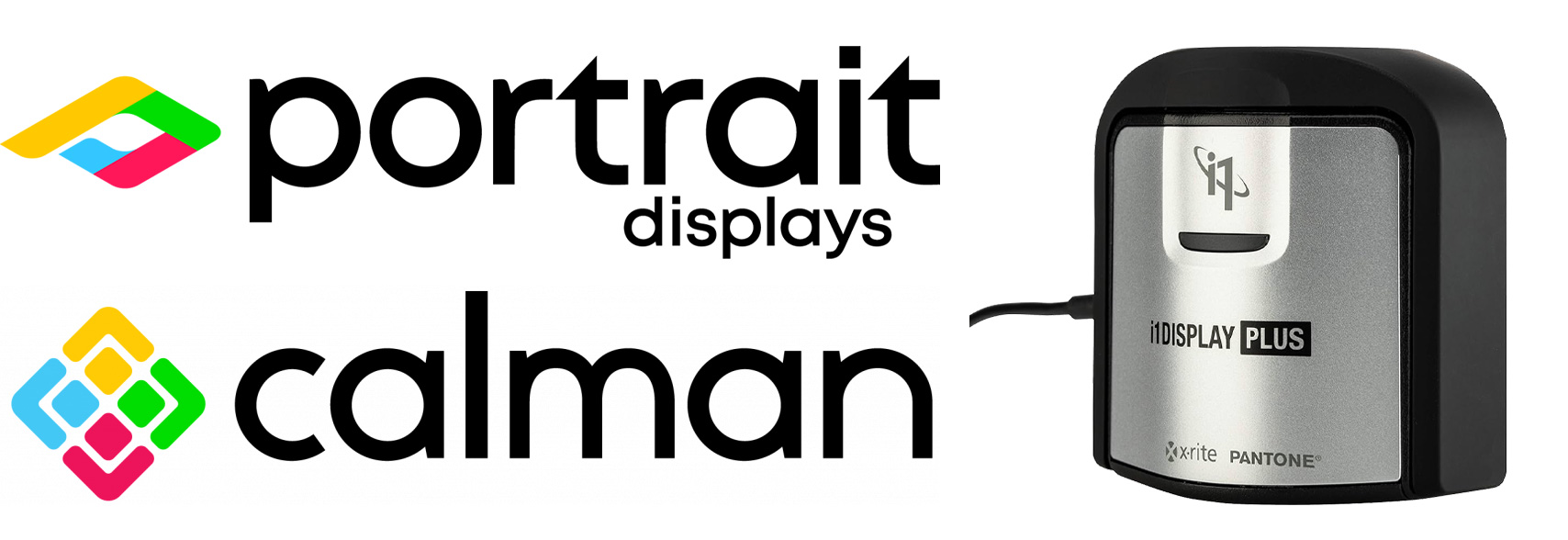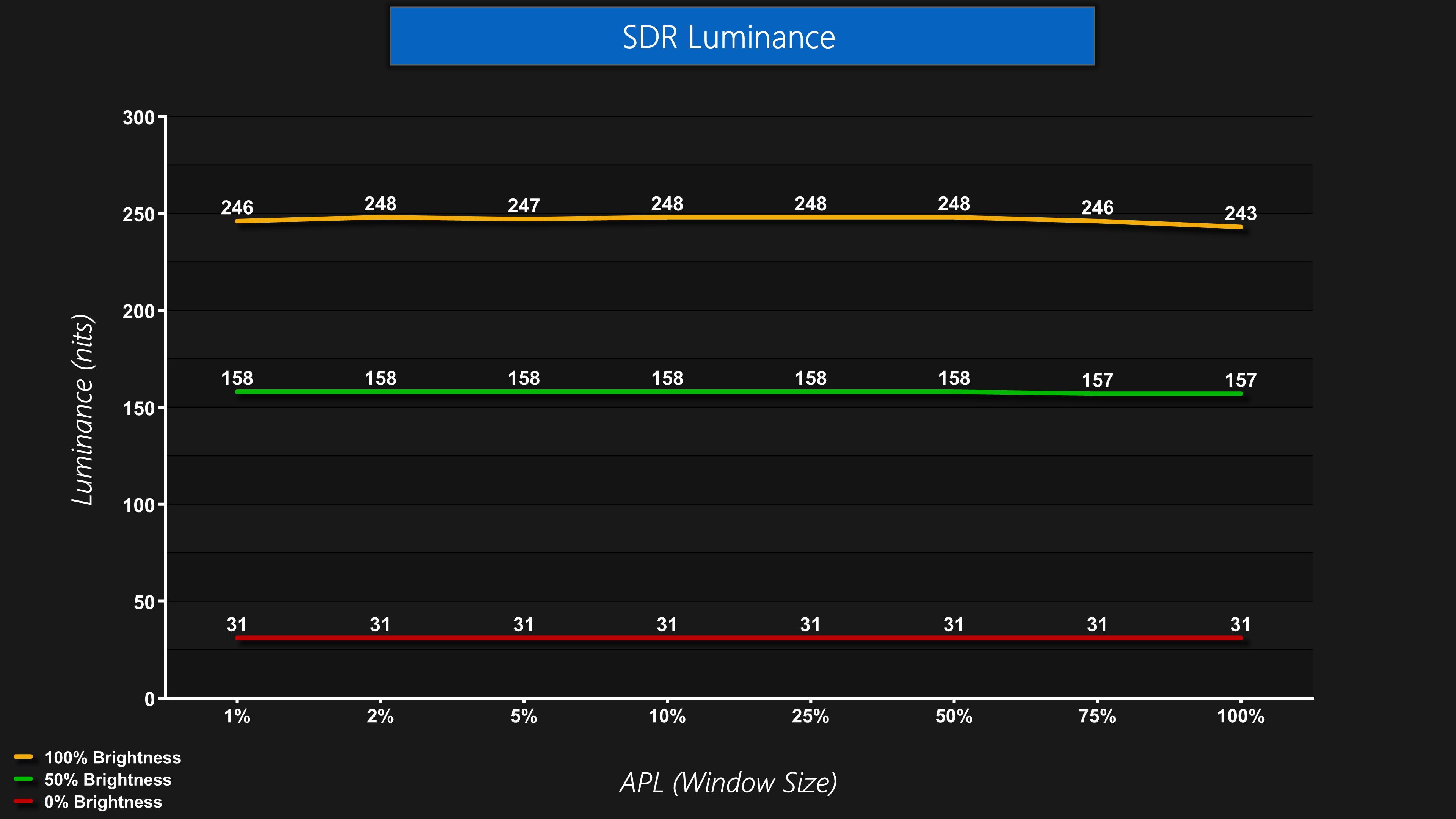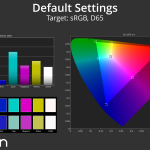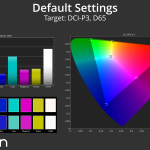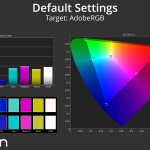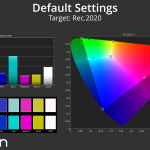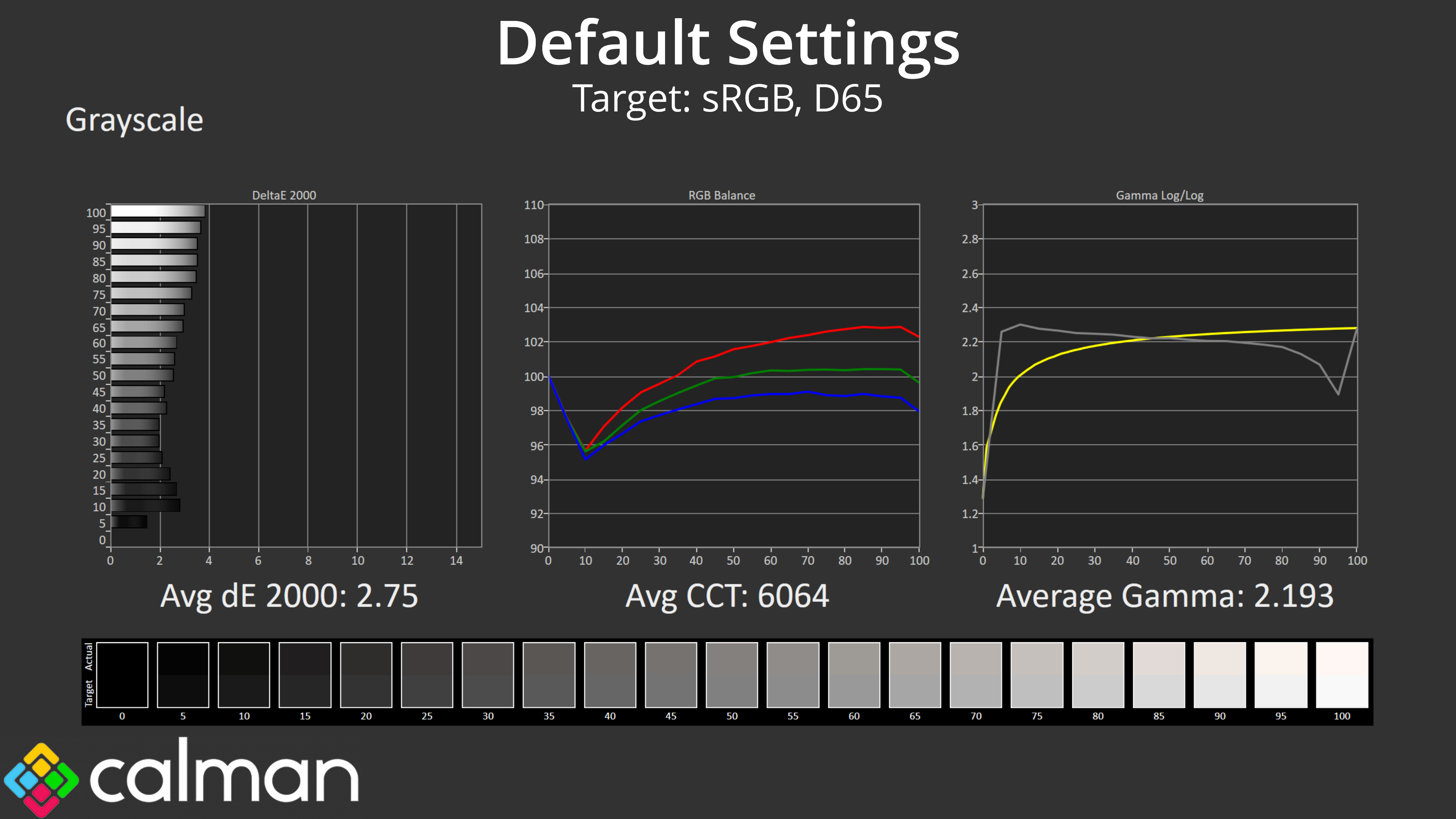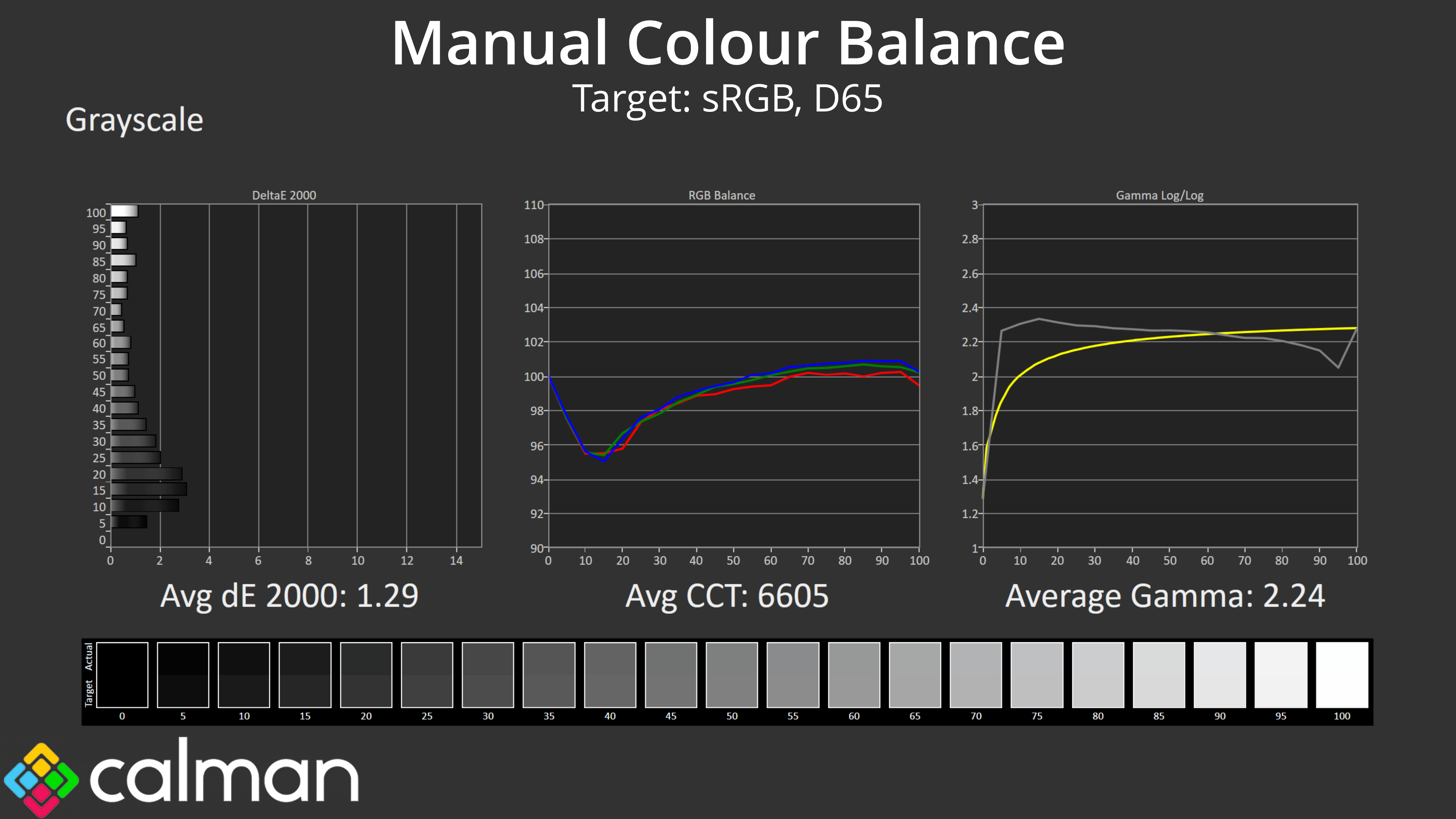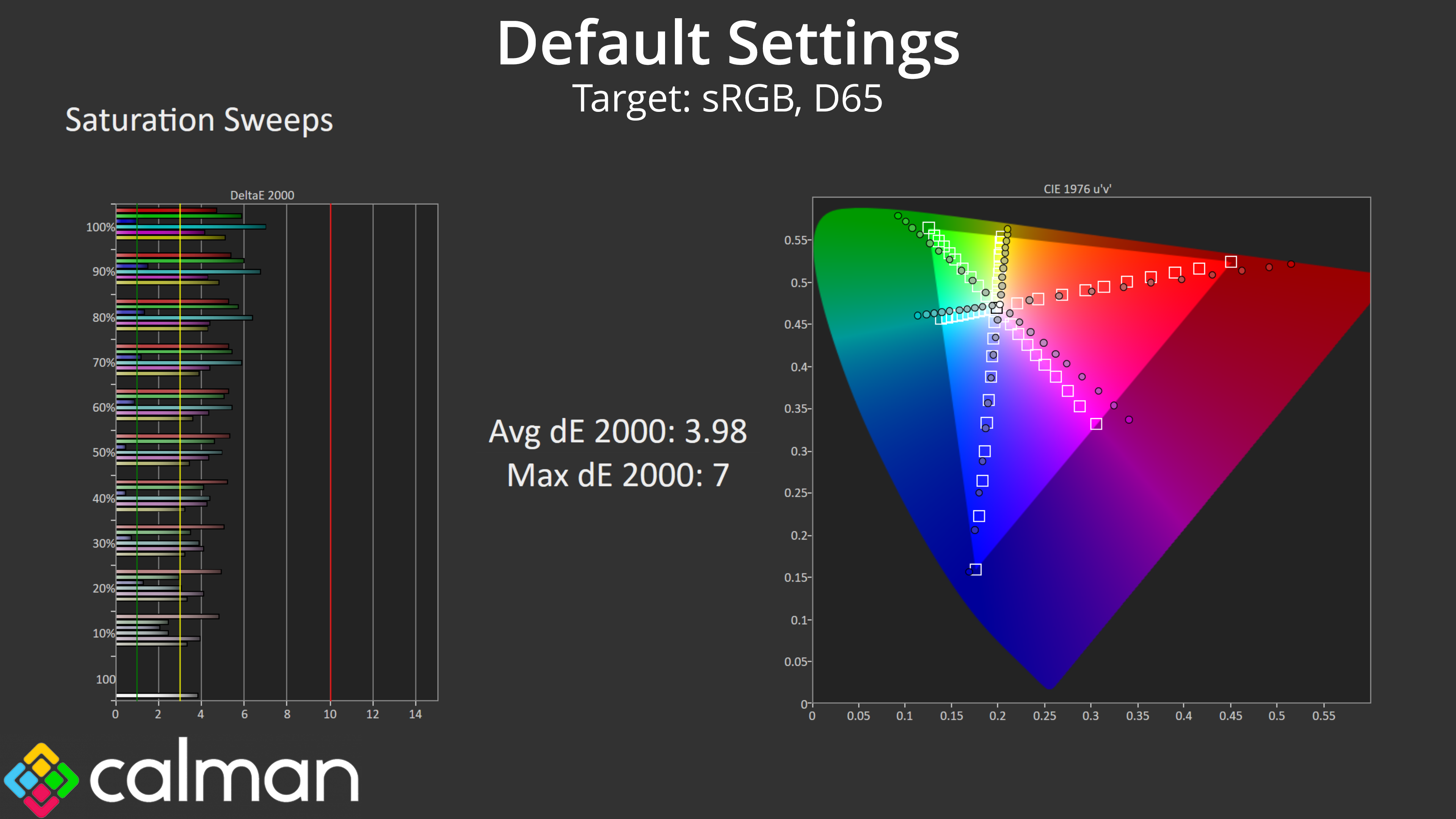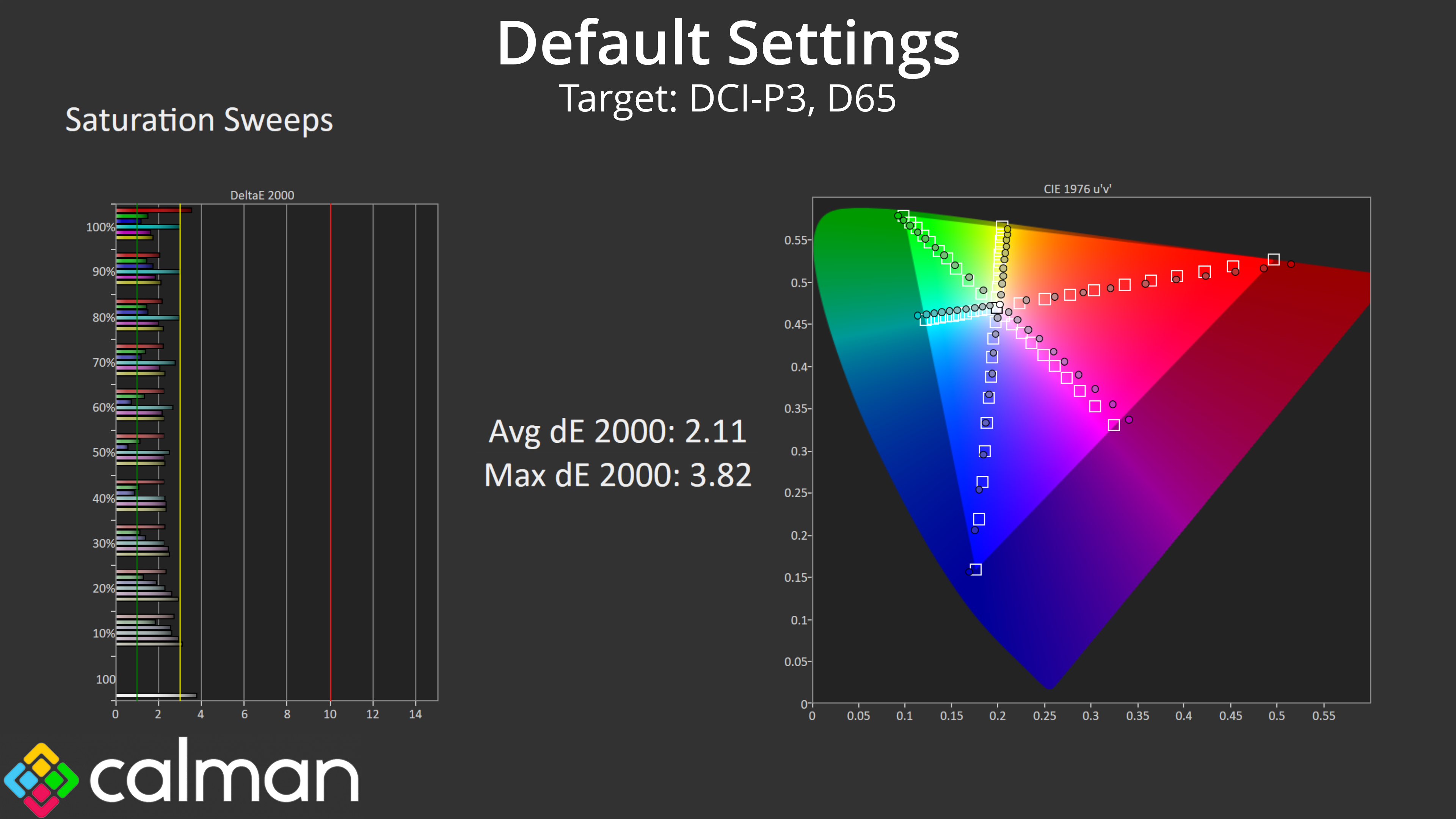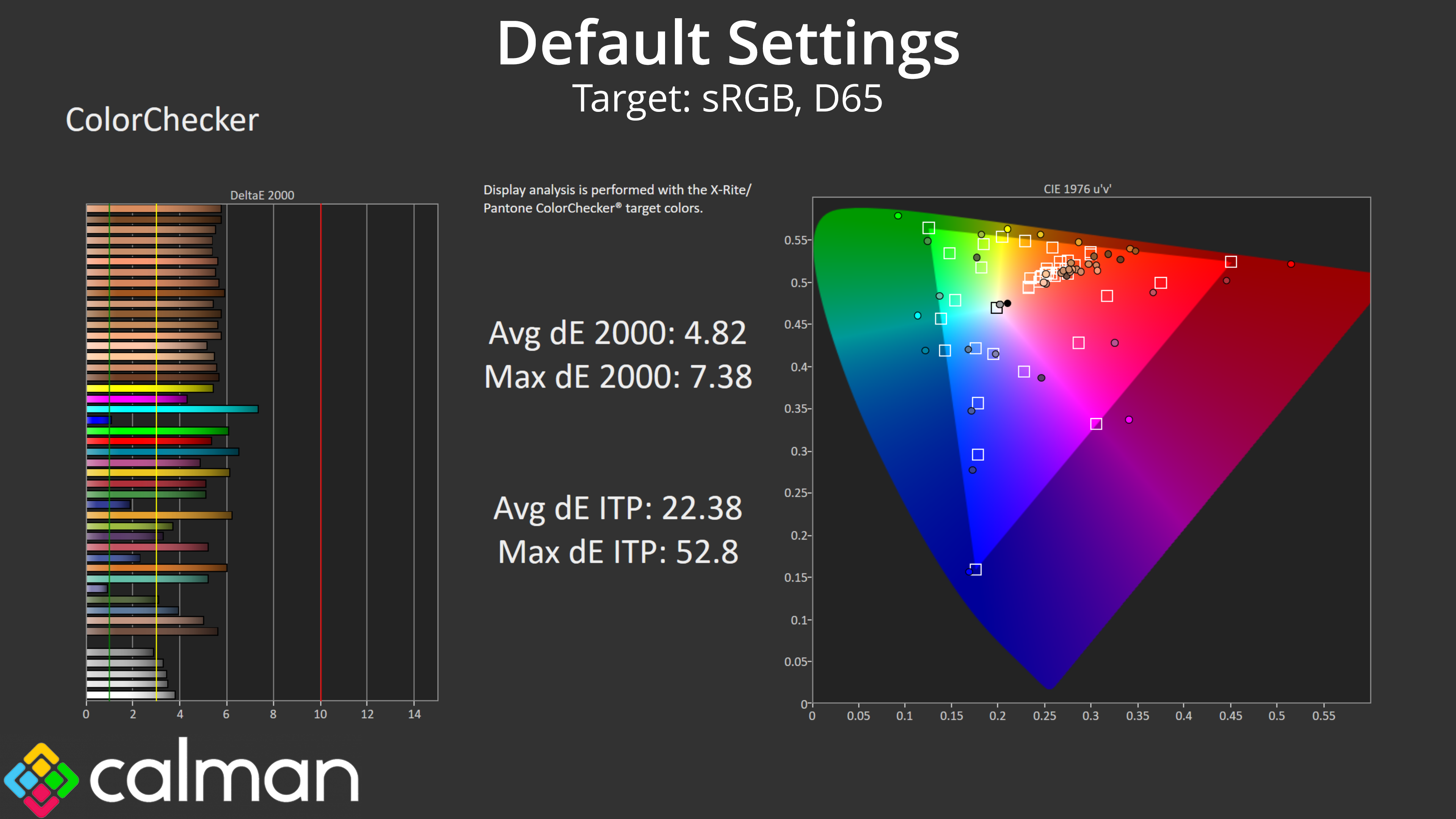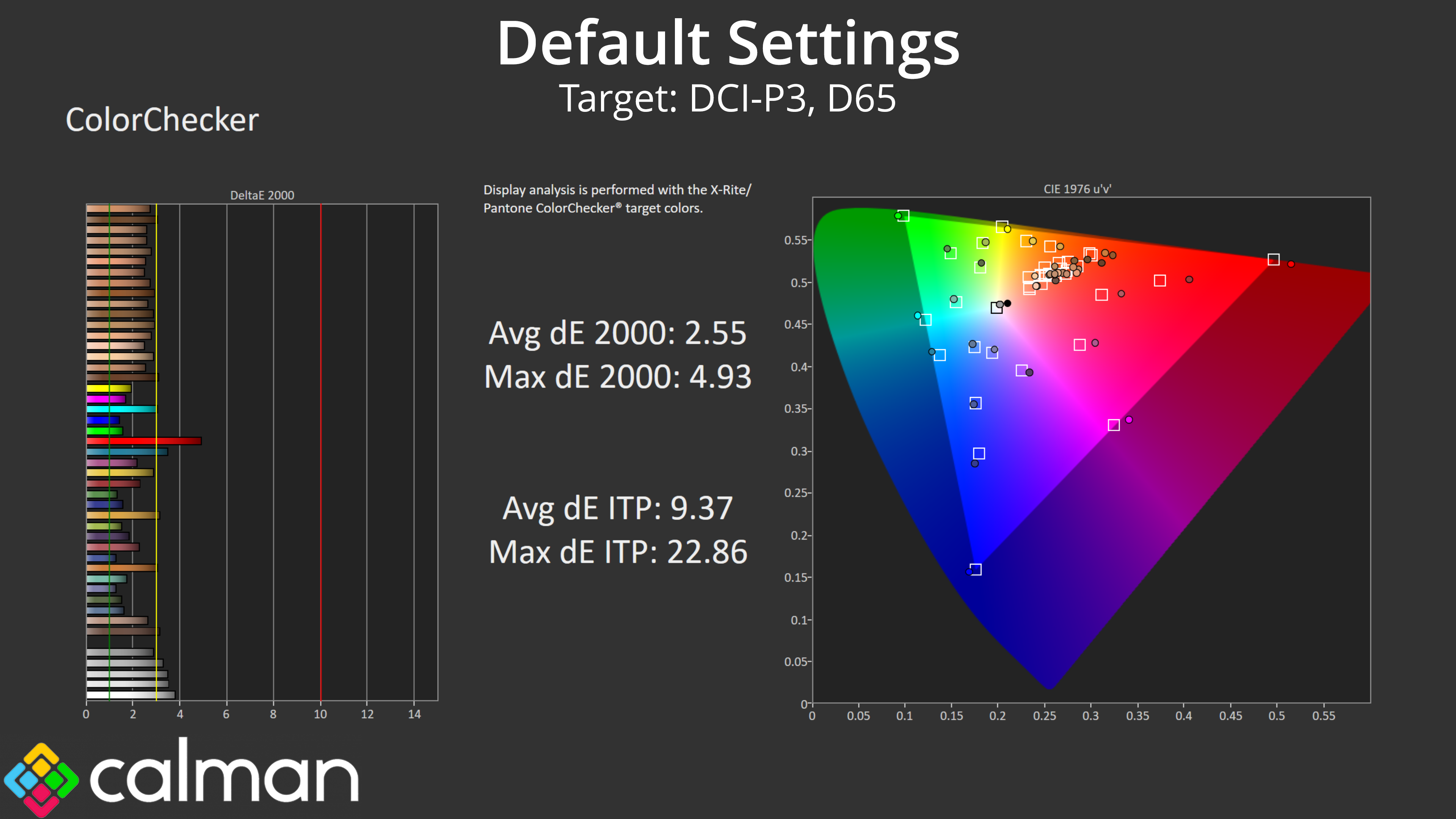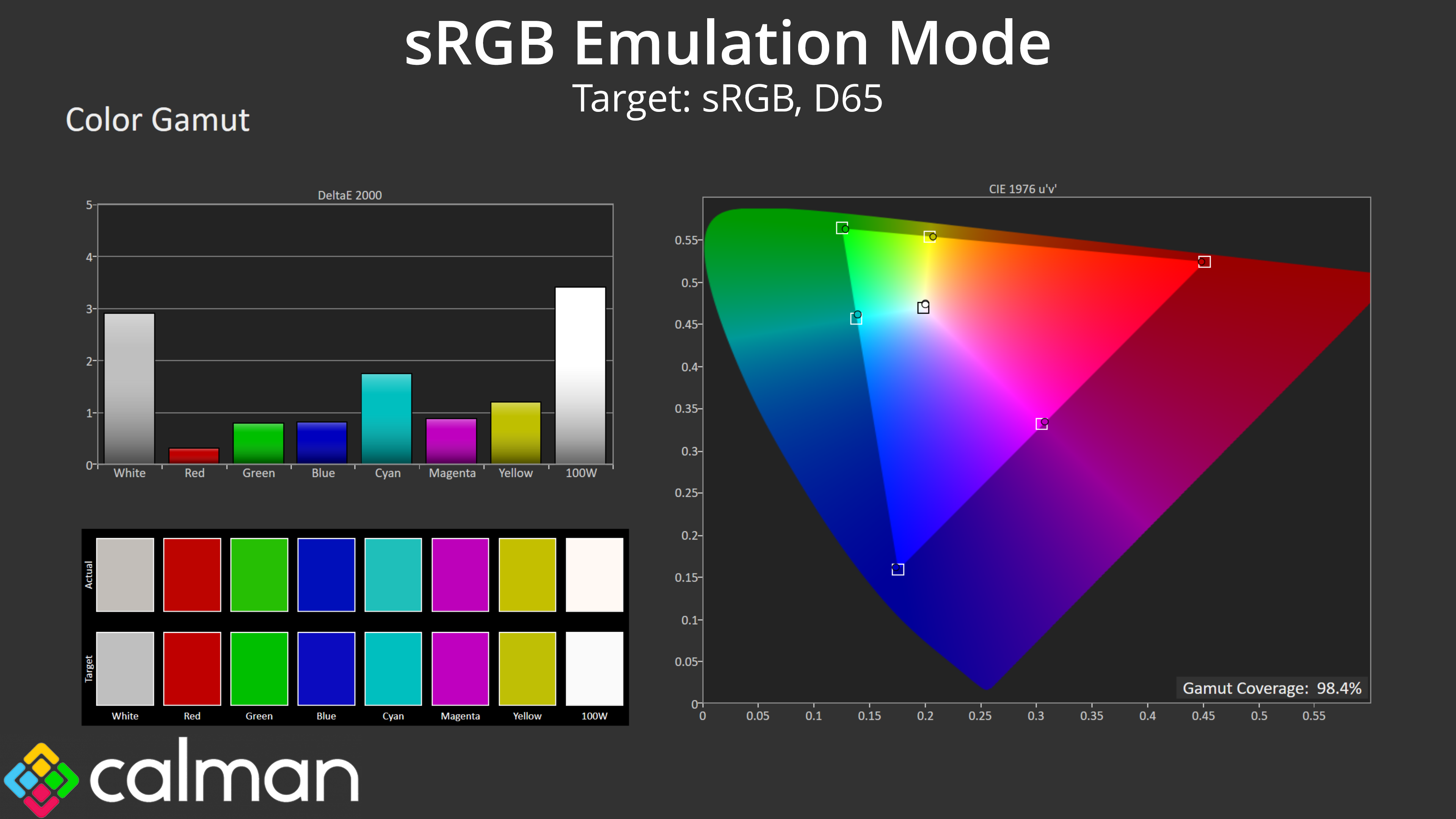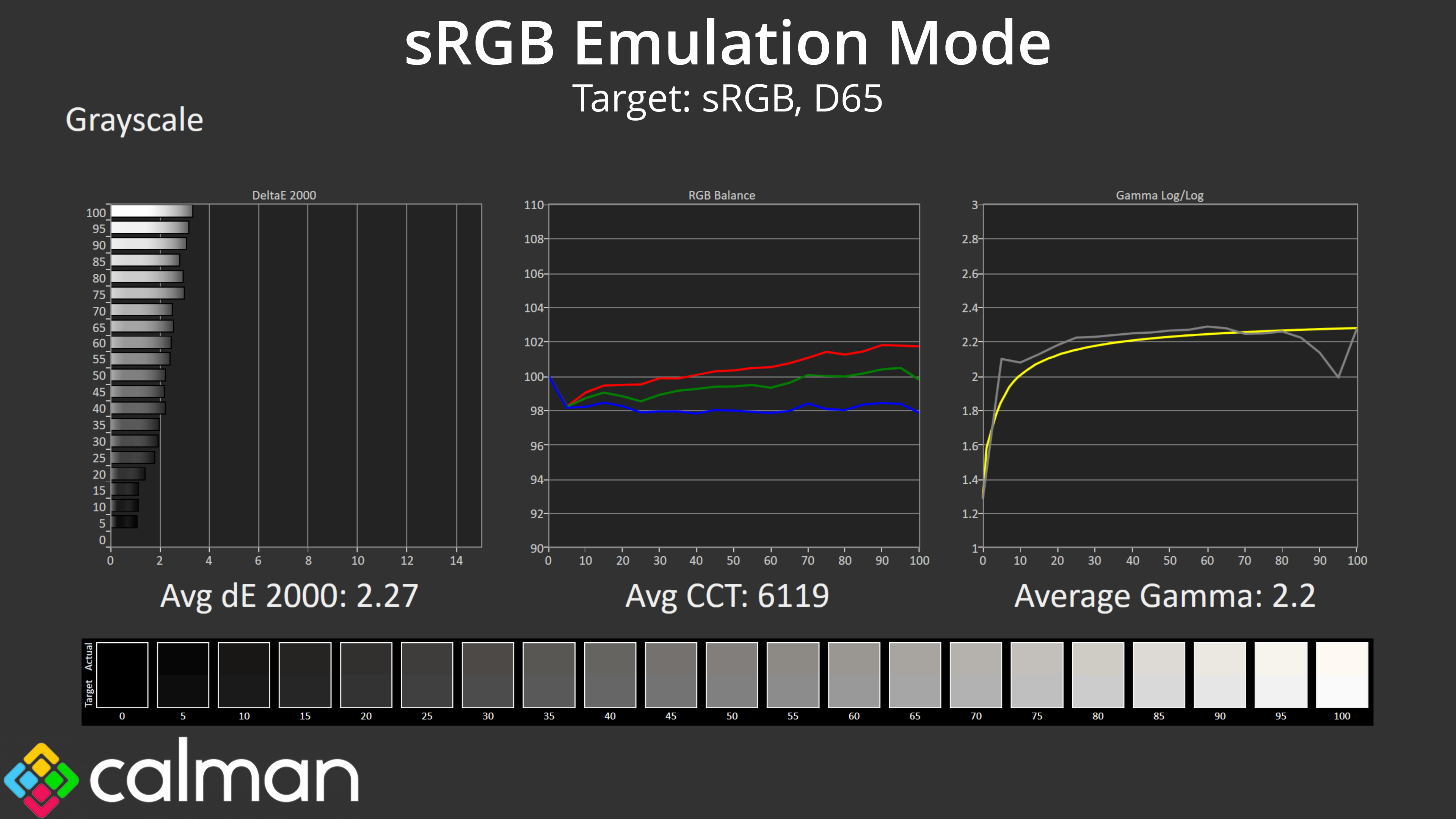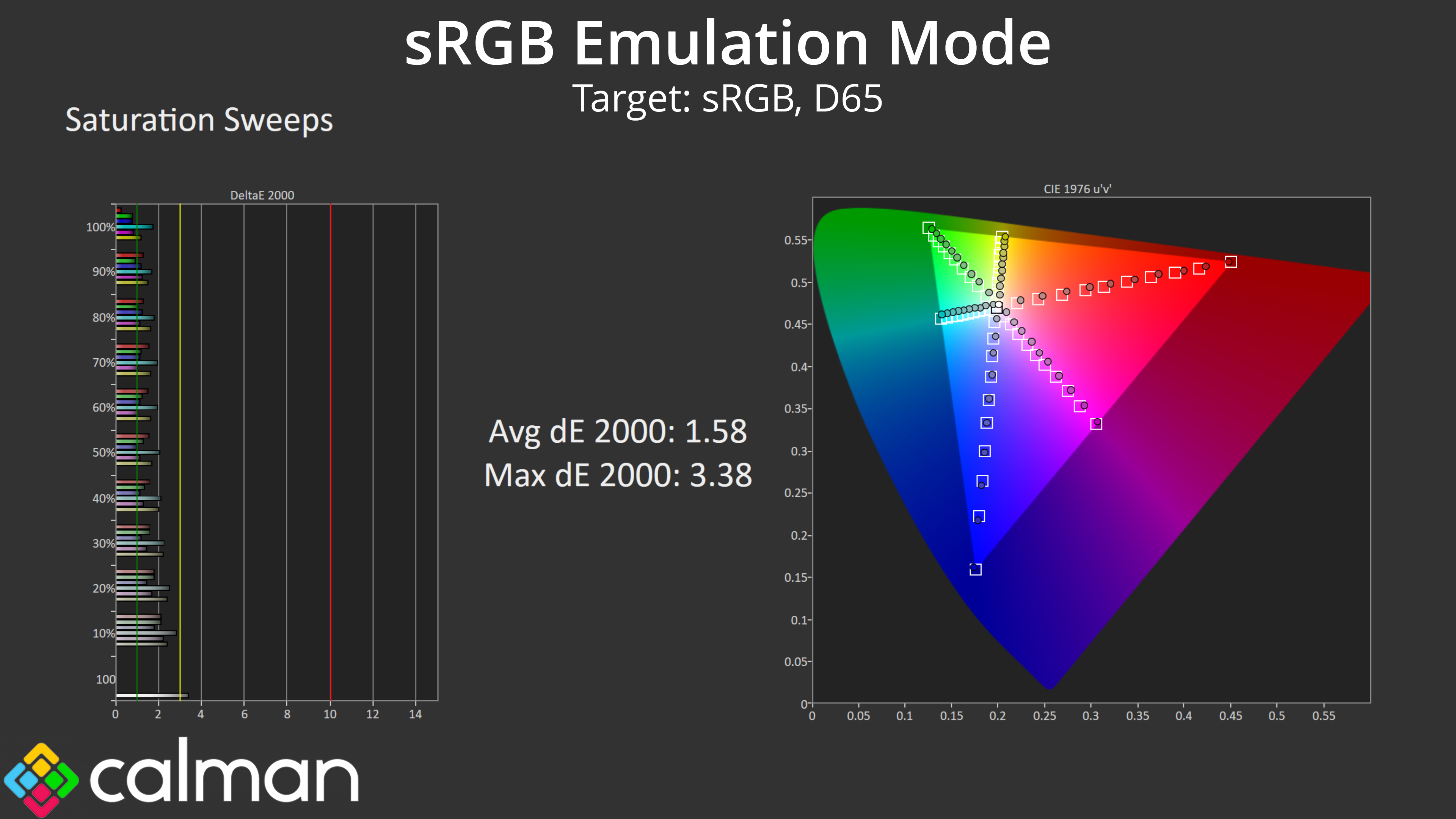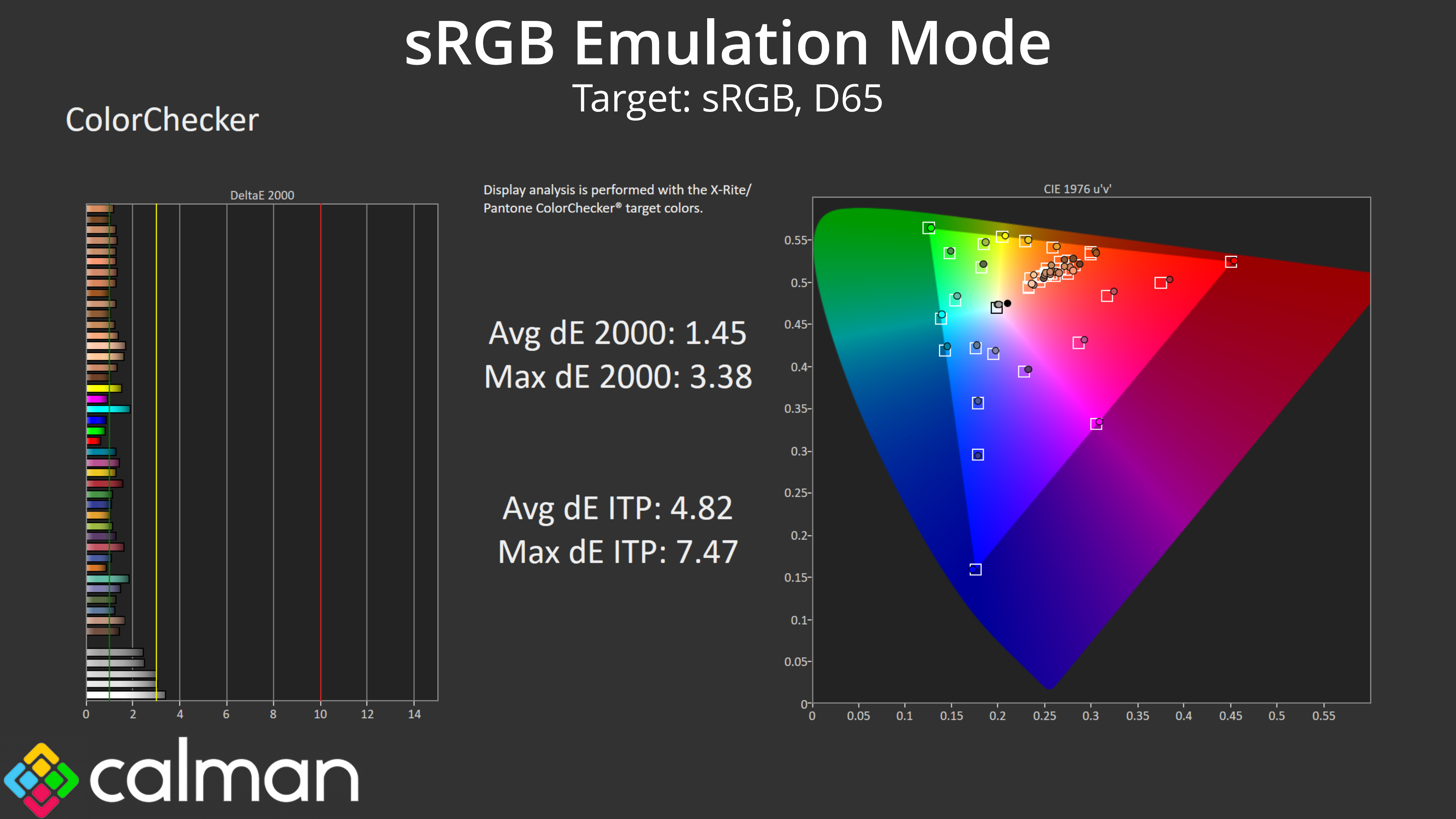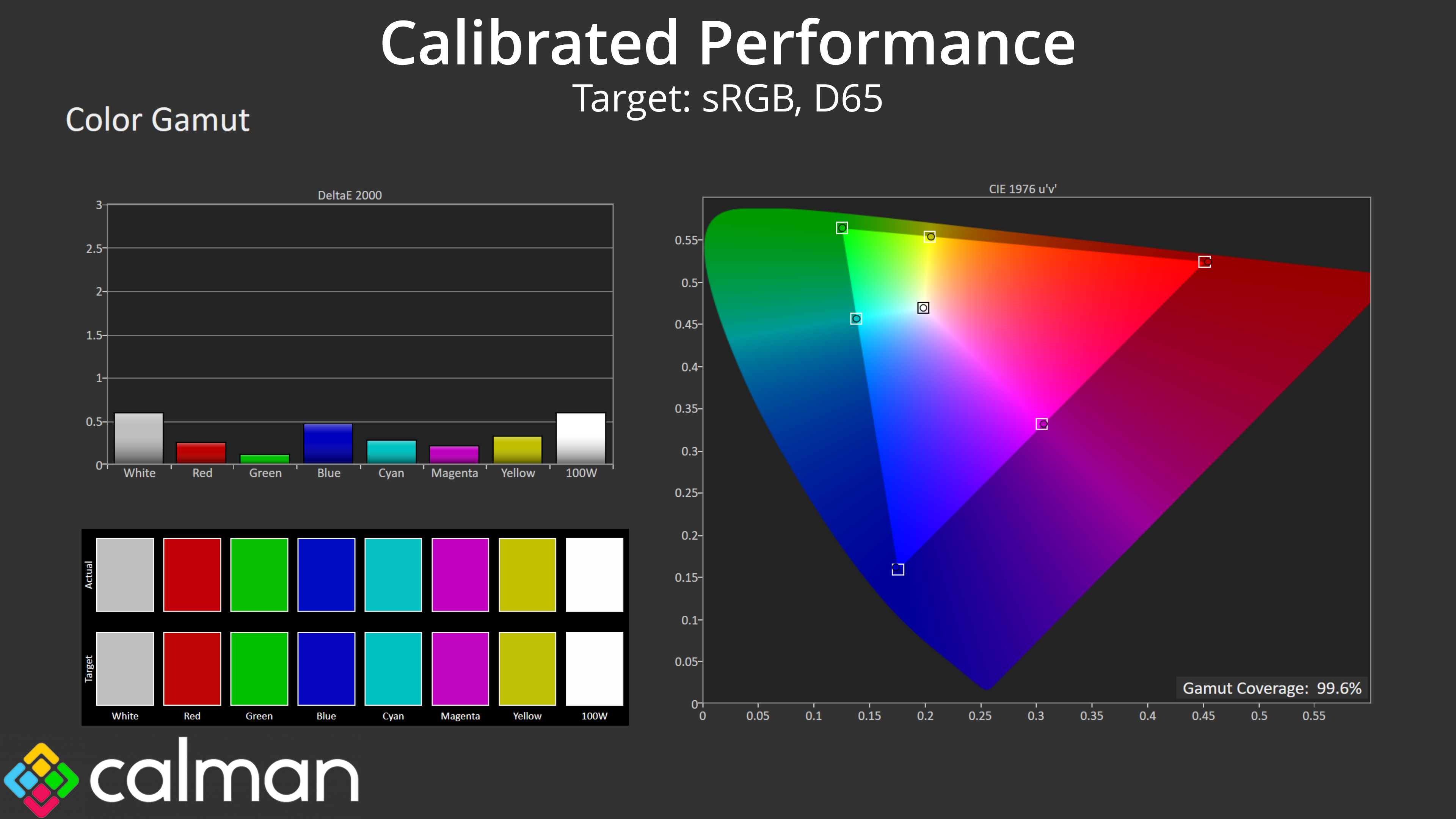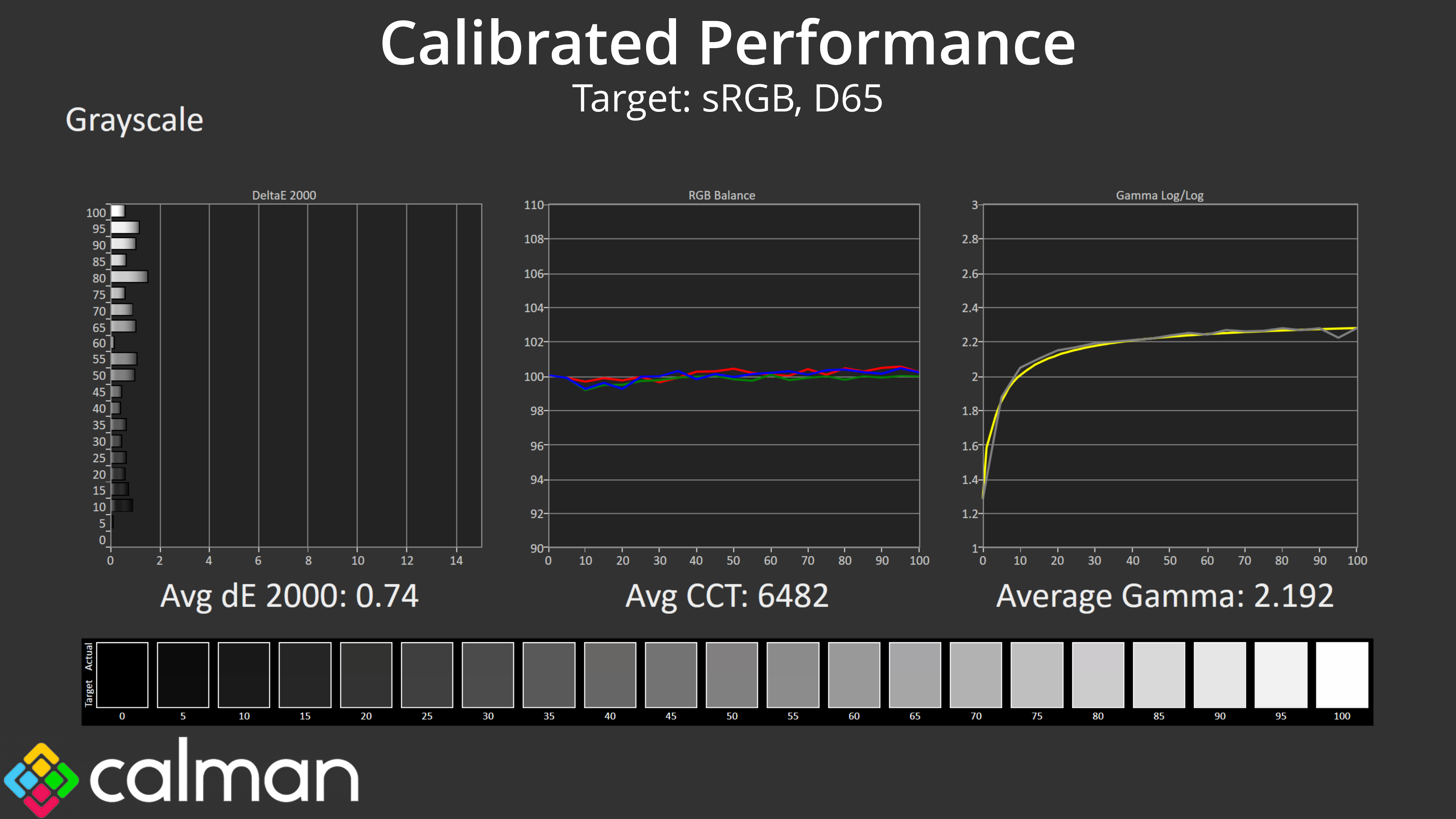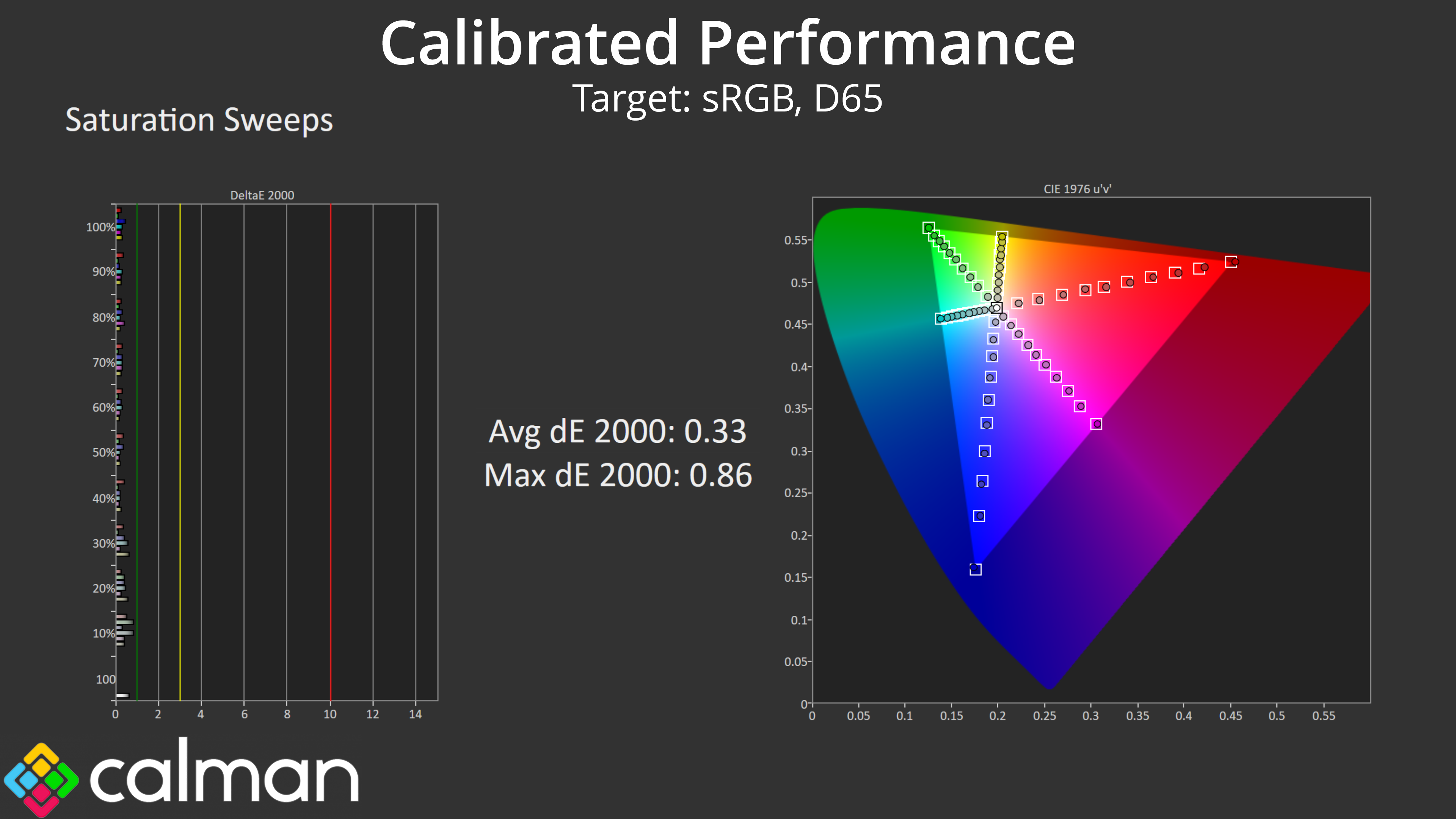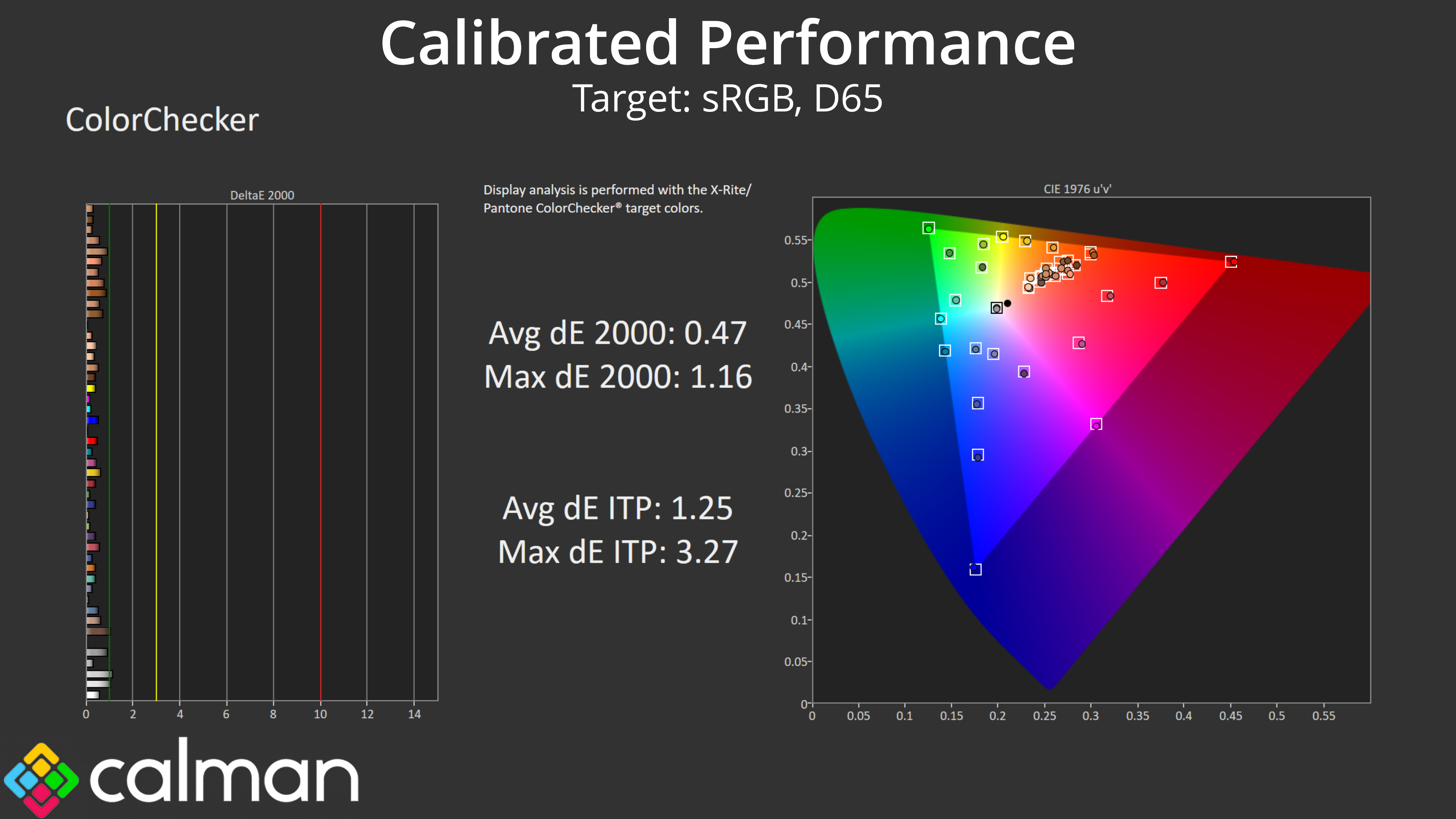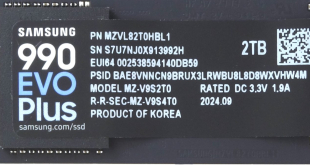Our main test involves using an X-Rite i1 Display Pro Plus colorimeter and utilising Portrait Display's Calman Ultimate software. The device sits on top of the screen while the software generates colour tones and patterns, which it compares against predetermined values to work out how accurate the screen is.
The results show:
- A monitor’s maximum brightness in candelas or cd/m2 at various levels set in the OSD.
- A monitor’s contrast ratio at various brightness levels in the OSD.
- Gamut coverage, primarily focusing on sRGB and DCI-P3 colour spaces.
- Greyscale accuracy, measured across 20 shades, with an average colour balance reported.
- The exact gamma levels, with a comparison against preset settings in the OSD.
- The colour accuracy, expressed as a Delta E ratio, with a result under 3 being fine for normal use, and under 2 being great for colour-accurate design work.
We first run these tests with the display in its out-of-the-box state, with all settings on default. If there is an sRGB emulation option or other useful mode then we may test that too. We then calibrate the screen using the Calman Ultimate software and run the tests again.
You can read more about our test methodology HERE.
Default settings
Brightness and Contrast (Full Screen)
| OSD Brightness | White Luminance (cd/m2) | Black Luminance (cd/m2) | Contrast Ratio |
| 0% | 30.4 | 0.00 | ~Infinite |
| 25% | 93.1 | 0.00 | ~Infinite |
| 50% | 156.6 | 0.00 | ~Infinite |
| 75% | 213.4 | 0.00 | ~Infinite |
| 100% | 243.3 | 0.00 | ~Infinite |
Starting our testing with brightness and contrast, it is worth noting that we did select the User mode for this test – out of the box, the MPG 321URX defaults to the Eco mode which caps brightness slightly lower than what can be achieved with the User mode. Still, a minimum brightness of 30 nits is a good result, and a full-screen peak of 243 nits is about expected for a QD-OLED monitor. Being OLED, we of course get perfect black levels, resulting in effectively infinite contrast.
It's also good to see that luminance is very steady regardless of the window size (APL). Some OLED monitors will show a noticeable drop off in brightness as the window size gets bigger, but that is not the case for the 321URX – it's a very uniform experience in this regard.
Gamut (CIE 1976)
| Colour space | Coverage |
| sRGB | 100% |
| DCI-P3 | 98.9% |
| Adobe RGB | 96.5% |
| Rec.2020 | 77.9% |
Being a QD-OLED monitor we see a very wide gamut from the 321URX, well exceeding the sRGB space and delivering 98.9% coverage of DCI-P3, alongside 96.5% reporting of the AdobeRGB colour space. Rec.2020 coverage is also decent, hitting 77.9%.
Greyscale
Moving onto greyscale testing, out of the box the 321URX delivers decent results, with an average dE 2000 of 2.75. My sample does have a slightly warm average Correlated Colour Temperature (CCT) of 6064K, due to the red channel being slightly raised while the blue channel is slightly low. Gamma tracking is generally fine too, averaging almost 2.2, though it is slightly too low in the brighter shades.
Thankfully there is user-adjustable white balance available on the 321URX, and I got significantly improved results simply by lowering the red balance from 100 down to 98. That resulted in an average dE 2000 of just 1.29 which is fantastic, with a improved average CCT of 6605K, too.
Saturation
In terms of saturation, given just how wide the monitor's gamut is, we see quite a bit of over-saturation relative to the sRGB space.
Things do look better relative to the DCI-P3 colour space however, with an average dE 2000 of 2.11.
Colour Accuracy
As expected, high levels of over-saturation means that colour accuracy relative to sRGB is pretty poor, with an average dE 2000 of 4.82.
Again, once we compare to the DCI-P3 space instead, the result do improve, with a new dE 2000 of 2.55.
sRGB Emulation Mode
The MPG 321URX also features an sRGB emulation mode, which does a good job at clamping the gamut as we can see above.
This mode didn't correct the slightly warm colour balance we saw in the out of the box settings, but it has improved gamma tracking slightly, aside from that one dip near the right-hand side of the curve.
Saturation accuracy is much improved too, with an average dE 2000 of 1.58, compared to 3.98 using the monitor's default mode.
Colour accuracy is now impressively good using the sRGB mode, with an average dE of just 1.45, so we can happily recommend using this mode – it's very accurate.
Calibrated results
We also put the 321URX though a full calibration using Calman Ultimate. This delivered almost flawless greyscale and gamma tracking, while average dE for our saturation sweeps dropped to just 0.33. Lastly, colour accuracy also improved with an average dE of 0.47, so it's worth doing if you have the tools and need as accurate an image as possible.
 KitGuru KitGuru.net – Tech News | Hardware News | Hardware Reviews | IOS | Mobile | Gaming | Graphics Cards
KitGuru KitGuru.net – Tech News | Hardware News | Hardware Reviews | IOS | Mobile | Gaming | Graphics Cards


